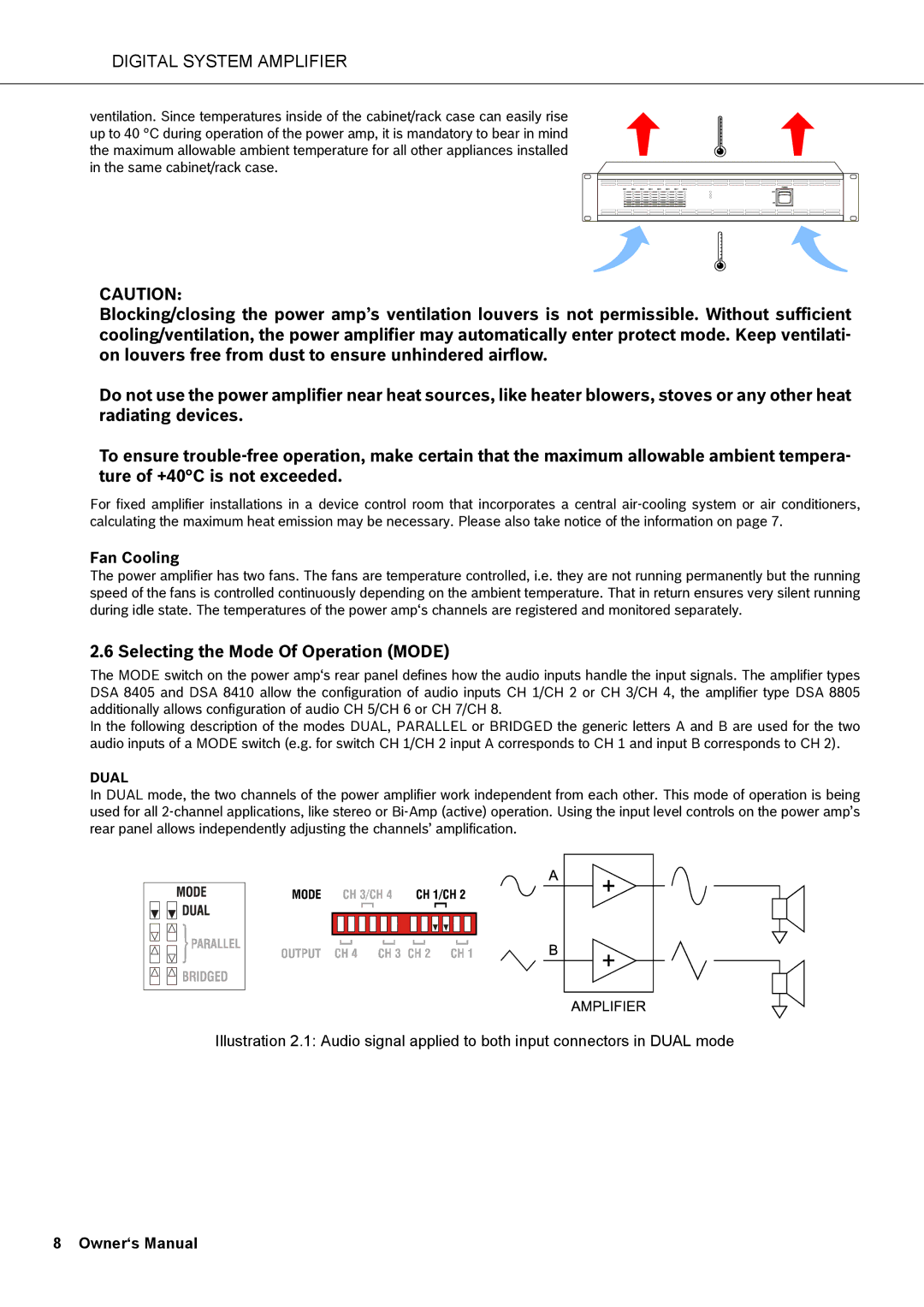
DIGITAL SYSTEM AMPLIFIER
ventilation. Since temperatures inside of the cabinet/rack case can easily rise up to 40 °C during operation of the power amp, it is mandatory to bear in mind the maximum allowable ambient temperature for all other appliances installed in the same cabinet/rack case.
CAUTION:
Blocking/closing the power amp’s ventilation louvers is not permissible. Without sufficient cooling/ventilation, the power amplifier may automatically enter protect mode. Keep ventilati- on louvers free from dust to ensure unhindered airflow.
Do not use the power amplifier near heat sources, like heater blowers, stoves or any other heat radiating devices.
To ensure
For fixed amplifier installations in a device control room that incorporates a central
Fan Cooling
The power amplifier has two fans. The fans are temperature controlled, i.e. they are not running permanently but the running speed of the fans is controlled continuously depending on the ambient temperature. That in return ensures very silent running during idle state. The temperatures of the power amp‘s channels are registered and monitored separately.
2.6 Selecting the Mode Of Operation (MODE)
The MODE switch on the power amp‘s rear panel defines how the audio inputs handle the input signals. The amplifier types DSA 8405 and DSA 8410 allow the configuration of audio inputs CH 1/CH 2 or CH 3/CH 4, the amplifier type DSA 8805 additionally allows configuration of audio CH 5/CH 6 or CH 7/CH 8.
In the following description of the modes DUAL, PARALLEL or BRIDGED the generic letters A and B are used for the two audio inputs of a MODE switch (e.g. for switch CH 1/CH 2 input A corresponds to CH 1 and input B corresponds to CH 2).
DUAL
In DUAL mode, the two channels of the power amplifier work independent from each other. This mode of operation is being used for all
Illustration 2.1: Audio signal applied to both input connectors in DUAL mode
